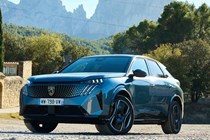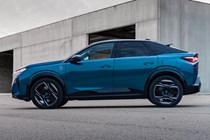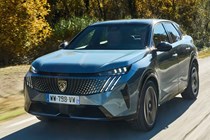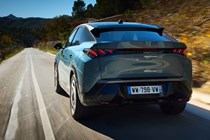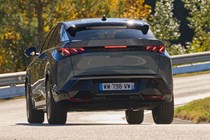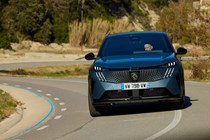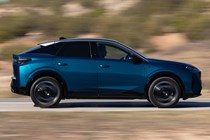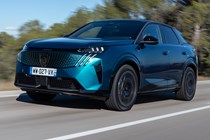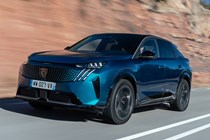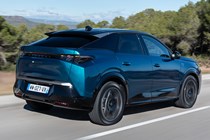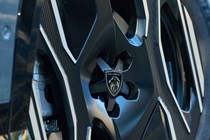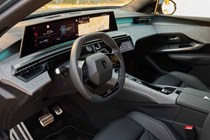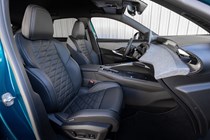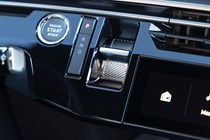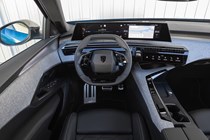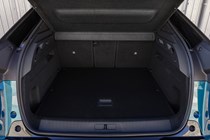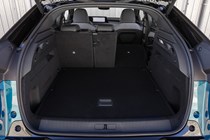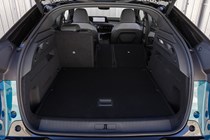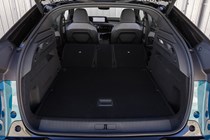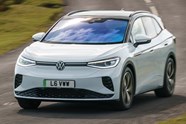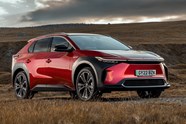
Peugeot e-3008 review
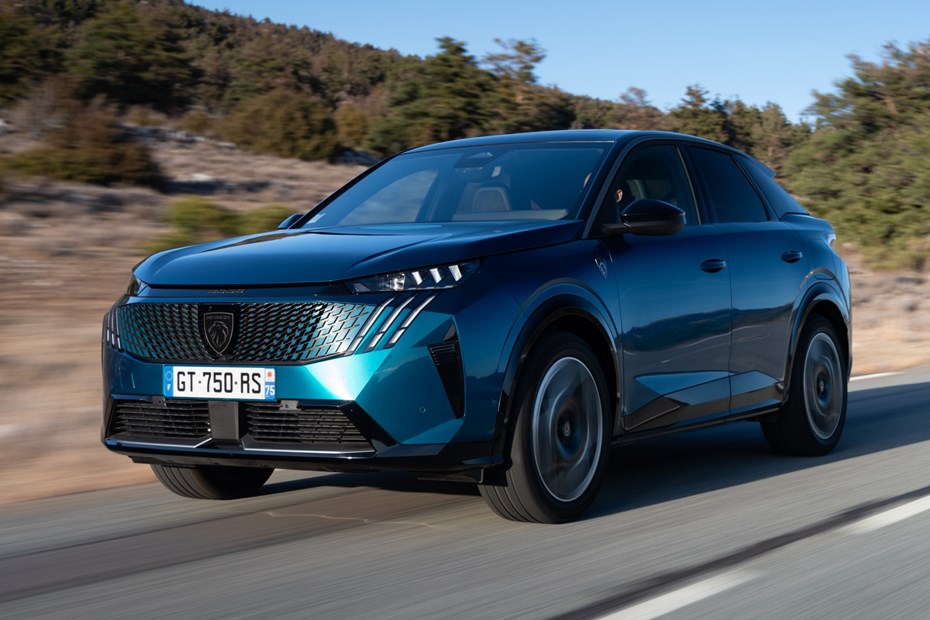
At a glance
| Price new | £45,850 - £49,650 |
|---|---|
| Used prices | £34,284 - £42,900 |
| Road tax cost | £0 |
Get an insurance quote with

|
|
| Fuel economy | Not tested to latest standards |
| Range | 326 miles |
| View full specs for a specific version | |
Available fuel types
Fully electric
Pros & cons
- Quiet
- Appealing interior
- Big range
- Stiff ride
- Rivals offer more rear space
- Pricier than key rivals
Peugeot e-3008 SUV rivals
Overview
Although its predecessors were familiar with electrification, the Peugeot E-3008 is the first 3008 to be powered solely by batteries. This third generation of Peugeot’s second-biggest seller is completely new from the tyres up, with both hybrid and fully electric versions planned from the start. With the all-electric SUV class already packed with talented rivals, let’s hope the new tech is up to the task.
While Peugeot isn’t known for its big batteries, the E-3008 Long Range has a claimed range of up to 435 miles, thanks to its enormous 98kWh pack. That’s a huge distance that was, until now, the preserve of big battery, luxury EVs. Expect it late in 2024 with a price tag significantly higher than what’s currently on offer.
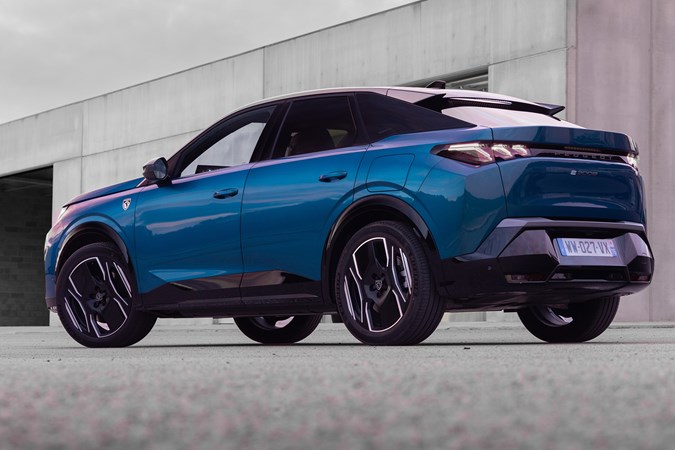
Thankfully, the E-3008 most people will buy is still well endowed on the battery front. The standard range car, equipped with a 73kWh battery, has a claimed 326-mile range. That’s more than the similarly priced Tesla Model Y RWD. If you’re looking to spend a bit less, there’s always the Kia Niro EV. Alternatively, the Skoda Kodiaq Coupe offers far punchier performance and a similarly sleek shape.
The Standard Range version has a 210hp permanent magnet electric motor driving the front wheels. An all-wheel drive version will arrive later, to be launched alongside the long-range version. This one develops 325hp and offers punchy acceleration in Sport mode and E-AWD with hill descent control for trickier terrain. It’ll be coupled with the smaller battery.
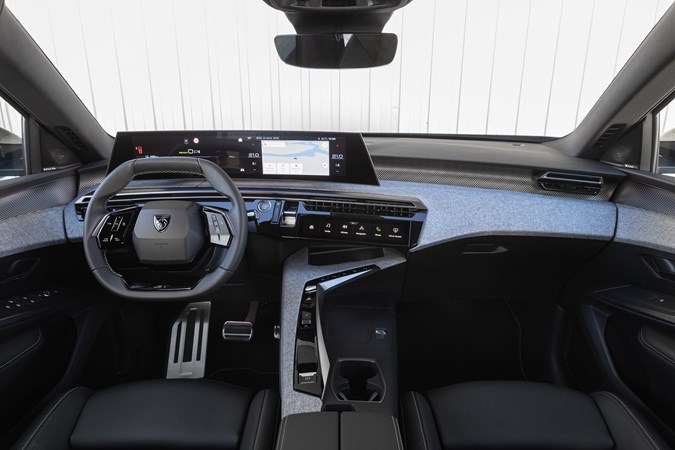
What’s it like inside?
Peugeot lavishes a lot of effort on its interiors, and the E-3008’s looks great. All UK cars feature a huge 21.0-inch curved touchscreen that combines the digital driver’s binnacle with the main infotainment, and is rear-mounted to seemingly float above the dash. It looks good, yet our test cars’ systems were rather laggy.
GT models have aluminium trim sections which are bathed in light according to your selected driving mode, glowing blue for normal and green for sport (although you can also choose you own colour). The dashboard and centre console are also trimmed in fabric, and you’ll find soft plastics strategically placed.
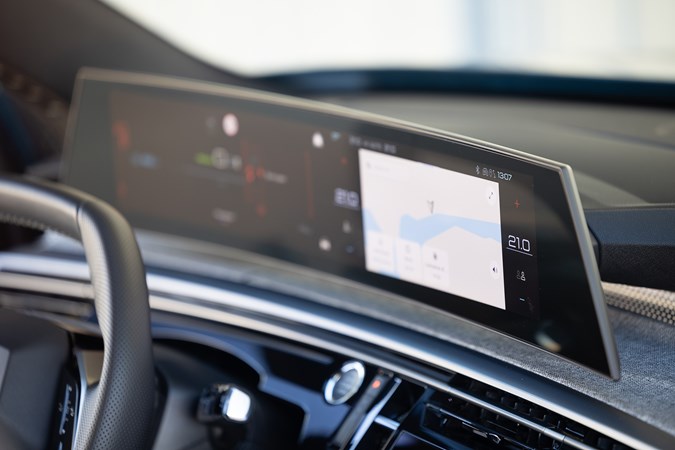
There are very few actual switches – the gear selector is now mounted on the dash, along with a Start/Stop button and a volume dial – but there’s a row of five iToggle icons on a touchscreen, to access important functions such as nav or media.
Swipe across the screen and you’ll access another five, and they can also be programmed as short cuts to your favourite radio station, important phone contacts or many other functions. We’d prefer more physical buttons and dials – predictably the heater controls are in the touchscreen – but these are a useful addition.
Practicality
Front space is for the most part good, with plenty and head and legroom, although the wide centre console means it doesn’t feel as airy as many rivals. Rear space is reasonable, but headroom will be tight for taller adults, especially with the panoramic sunroof fitted.

Legroom is okay, but someone six-foot plus sat behind someone similarly tall will feel hemmed in. The floor in the rear is nearly flat, but the protruding centre console gets in the way of the centre passenger’s legs anyway. A Renault Scenic is better here, while the Skoda Enyaq soundly thrashes it for rear space.
Boot space below the parcel shelf is identical to the old model at 520-litres, and there’s a two-level boot floor so you can hide your cables. That’s handy as there’s no storage under the bonnet up front. Folding the rear seats is done with a 40/20/40 split, making it easier to transport long items and passengers.
What’s it like to drive?
First impressions are of an extremely refined car on the motorway, with minimal wind noise and barely a hint of tyre noise. The driving position is commanding, and at speed the ride is acceptable, while adaptive cruise control and steering assist can help make your journey easier.
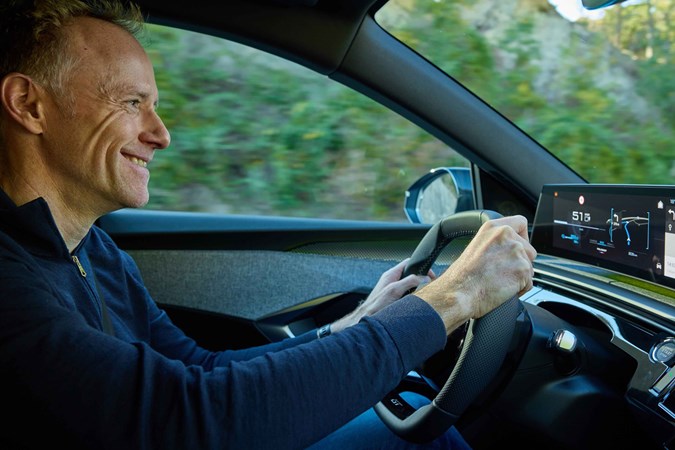
Unfortunately, expansion joints are felt, while the ride deteriorates further as speeds decrease. Even on relatively smooth roads you’ll feel the E-3008 fidgeting beneath you, with potholes and bumps jarring. Crossing a sharp-edged rubber speed bump is downright unpleasant.
The steering is light and effortless around town, but never weights up naturally or gives you any idea what the front tyres are doing as speed and cornering forces increase. Sport mode adds a load of unnatural weight without building any more confidence.
It’s a heavy car for its size – the 73kWh E-3008 weighs a shade over 2.1 tonnes, making it 234kg heavier than the new Renault Scenic with its bigger 87kWh battery. As a consequence it can feel unwieldy in corners, with a slightly ponderous feel through enthusiastically taken S bends and a bit of lean.
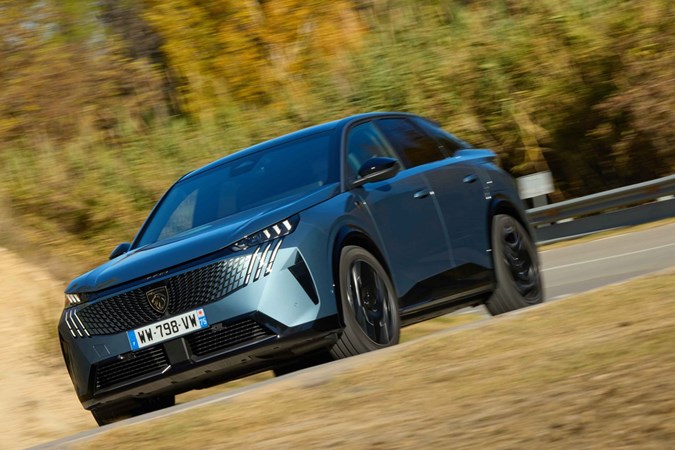
The brake pedal feels more natural than many rivals, and there are also wheel-mounted paddles to allow the driver to select from three grades of regenerative braking. But they could be better spaced and would benefit from a ‘one pedal’ mode.
Acceleration is steady off the line before increasing punchily in the mid-range. The 0-62mph time is 8.8secs. Again that’s nothing to write home about – almost a second behind the lighter Scenic and significantly down on an Enyaq 55. Drivers wanting a faster E-3008 need the AWD version.
Battery range and charging
Peugeot claims best-in-class aerodynamics, helping deliver efficiency of 4.47 miles per kWh on the WLTP cycle. The E-3008 goes without a battery preconditioning cycle – the engineers don’t feel it’s necessary. A heat pump, which reduces demand on the air-con system and boosts efficiency in winter, is only an optional extra, too. We saw a disappointing 3.3 miles per kWh on a fairly gentle run, but we’ll have to pass full judgement on a longer drive.
Maximum DC charging is 160kW, replenishing a 20% battery to 80% in a claimed 30 minutes. For AC home-charging, an 11kW three-phase on-board charger is standard but for UK homes limited to single-phase electricity, 7.4kW recharging from 20% to full takes eight hours.
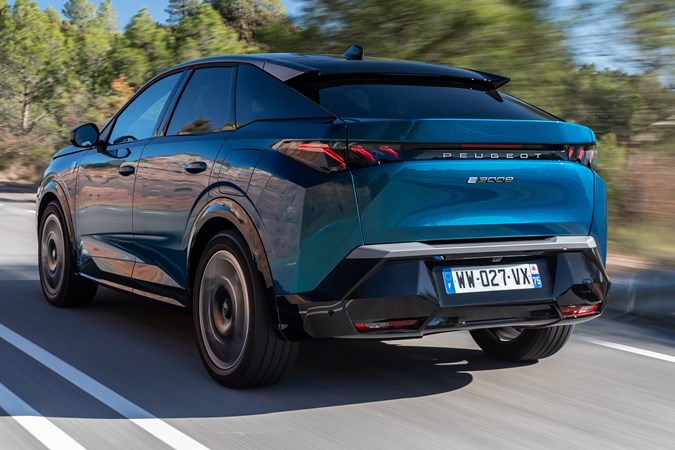
What else should I know?
Route-mapping by TomTom is sophisticated and works like the impressive Tesla system, calculating your route and recommending a specific charging stop (with stopping time) if necessary, and letting you input how much charge you’d like remaining at journey’s end.
A plug-in hybrid will also be introduced later in 2024, and there’s a self-charging version that should cost around £10k less than the EV. Peugeot expects sales to be split roughly 50:50 between EV and hybrid models, which is way ahead of electric’s share of the UK market.
To find out whether we rate the Peugeot E-3008, read on for our verdict.



